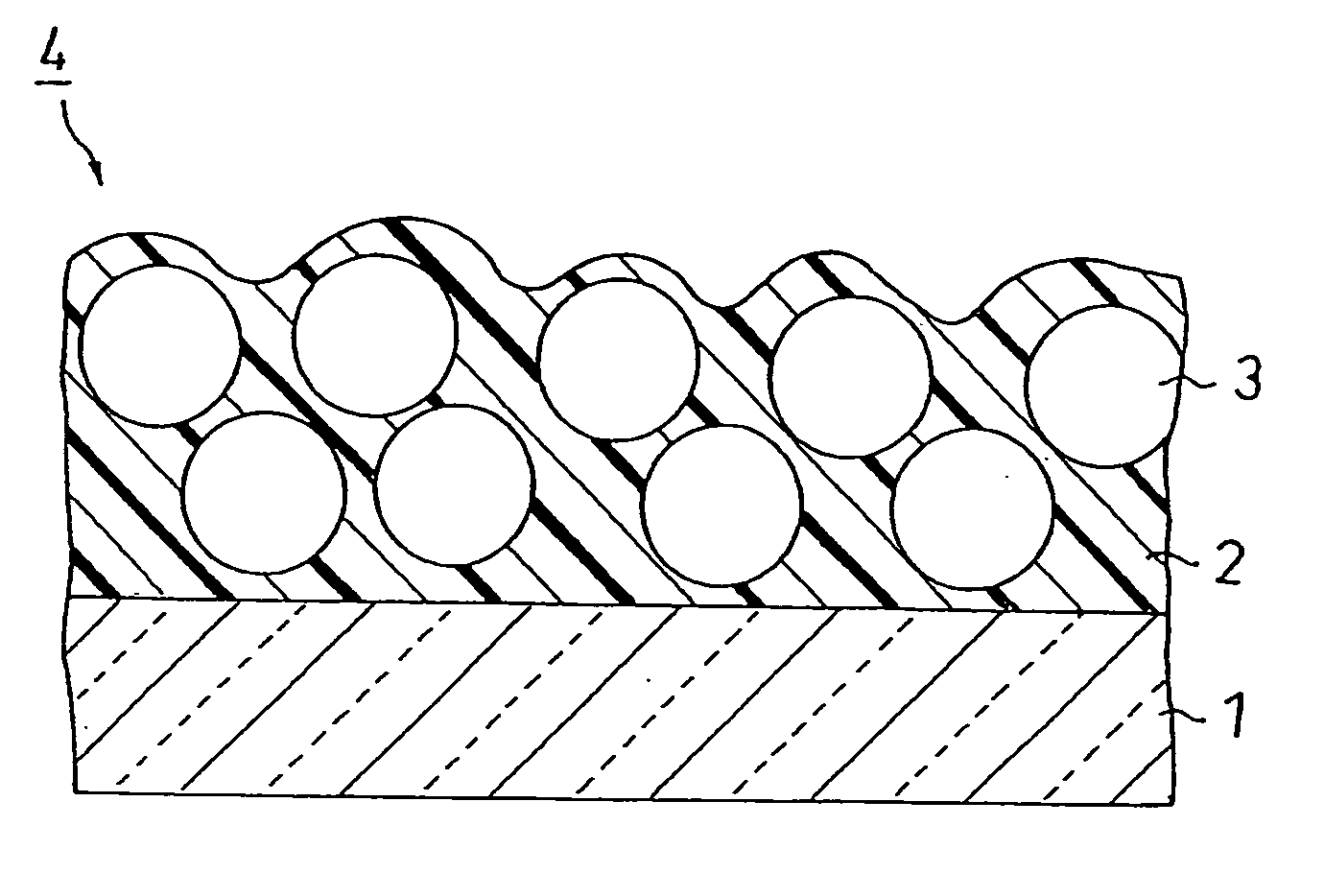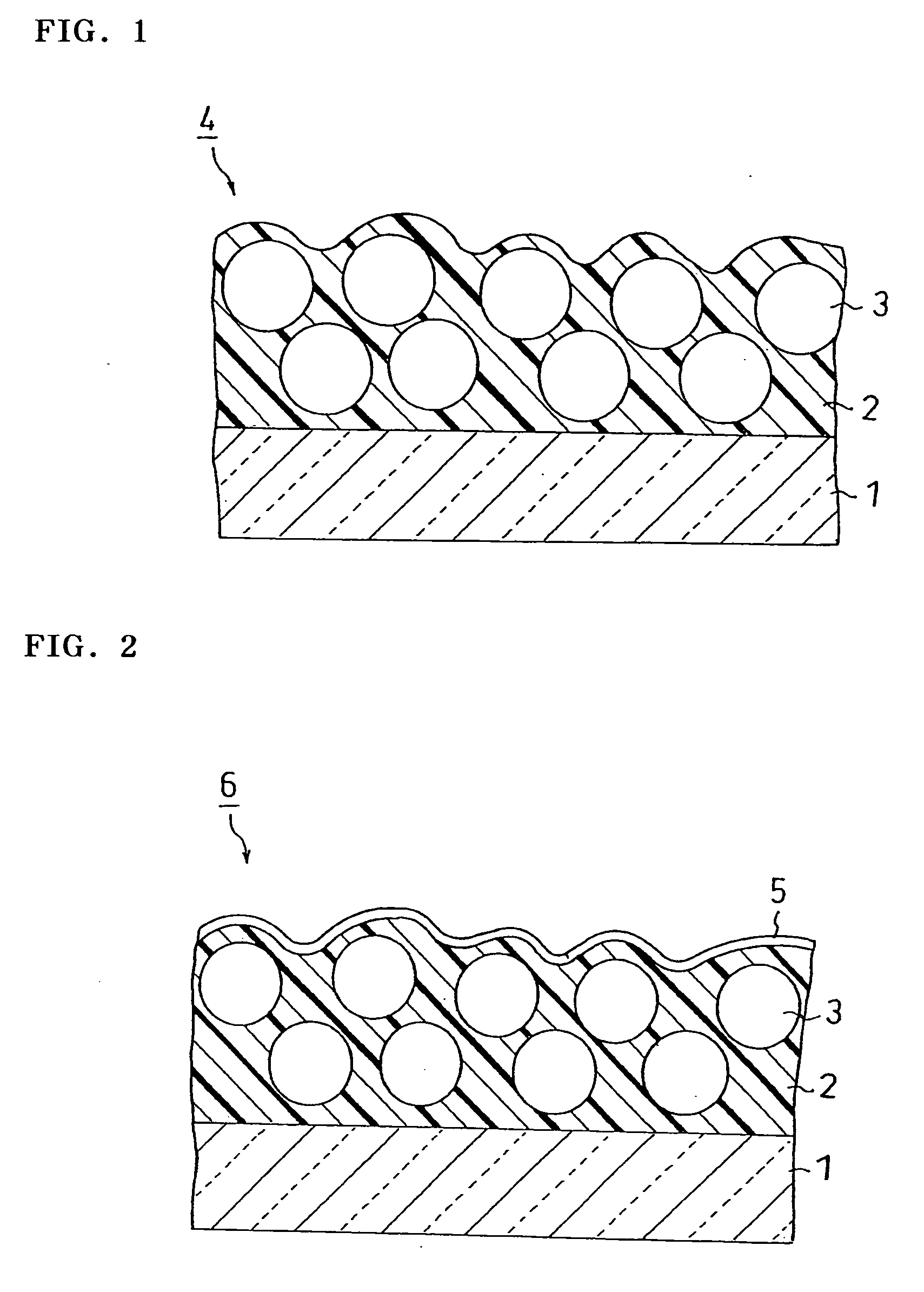Hard-coated antiglare film and method of manufacturing the same
- Summary
- Abstract
- Description
- Claims
- Application Information
AI Technical Summary
Benefits of technology
Problems solved by technology
Method used
Image
Examples
example 1
[0165] A mixture was prepared using the following materials: a urethane acrylate (hereinafter referred to as Component A) (100 parts of a urethane acrylate produced with pentaerythritol acrylate and hydrogenated xylene diisocyanate); polyol (meth)acrylate (hereinafter referred to as Component B) (49 parts of dipentaerythritol hexaacrylate (hereinafter referred to as Component B1 (monomer)), 24 parts of pentaerythritol triacrylate (hereinafter referred to as Component B2 (monomer)) and 41 parts of pentaerythritol tetraacrylate (hereinafter referred to as Component B3 (monomer)); and a (meth)acrylic polymer having an alkyl group containing at least two hydroxyl groups (hereinafter referred to as Component C) (59 parts of a (meth)acrylic polymer having a 2-hydroxyethyl group and a 2,3-dihydroxypropyl group, PC 1097 (trade name) manufactured by Dainippon ink and chemicals, Incorporated). A hard-coating material was prepared by diluting the mixture, 30 parts (based on the total amount of...
example 2
[0167] In this example, a hard-coated antiglare film was prepared using the process of Example 1 except that the addition amount of the PMMA particles was changed to 15 parts.
example 3
[0168] In this example, a hard-coated antiglare film was prepared using the process of Example 1 except that PMMA particles with an average particle size of 15 μm (refractive index: 1.49) were added in an amount of 30 parts and that the solids content was changed to 35%.
PUM
| Property | Measurement | Unit |
|---|---|---|
| Length | aaaaa | aaaaa |
| Length | aaaaa | aaaaa |
| Fraction | aaaaa | aaaaa |
Abstract
Description
Claims
Application Information
 Login to View More
Login to View More - R&D
- Intellectual Property
- Life Sciences
- Materials
- Tech Scout
- Unparalleled Data Quality
- Higher Quality Content
- 60% Fewer Hallucinations
Browse by: Latest US Patents, China's latest patents, Technical Efficacy Thesaurus, Application Domain, Technology Topic, Popular Technical Reports.
© 2025 PatSnap. All rights reserved.Legal|Privacy policy|Modern Slavery Act Transparency Statement|Sitemap|About US| Contact US: help@patsnap.com



